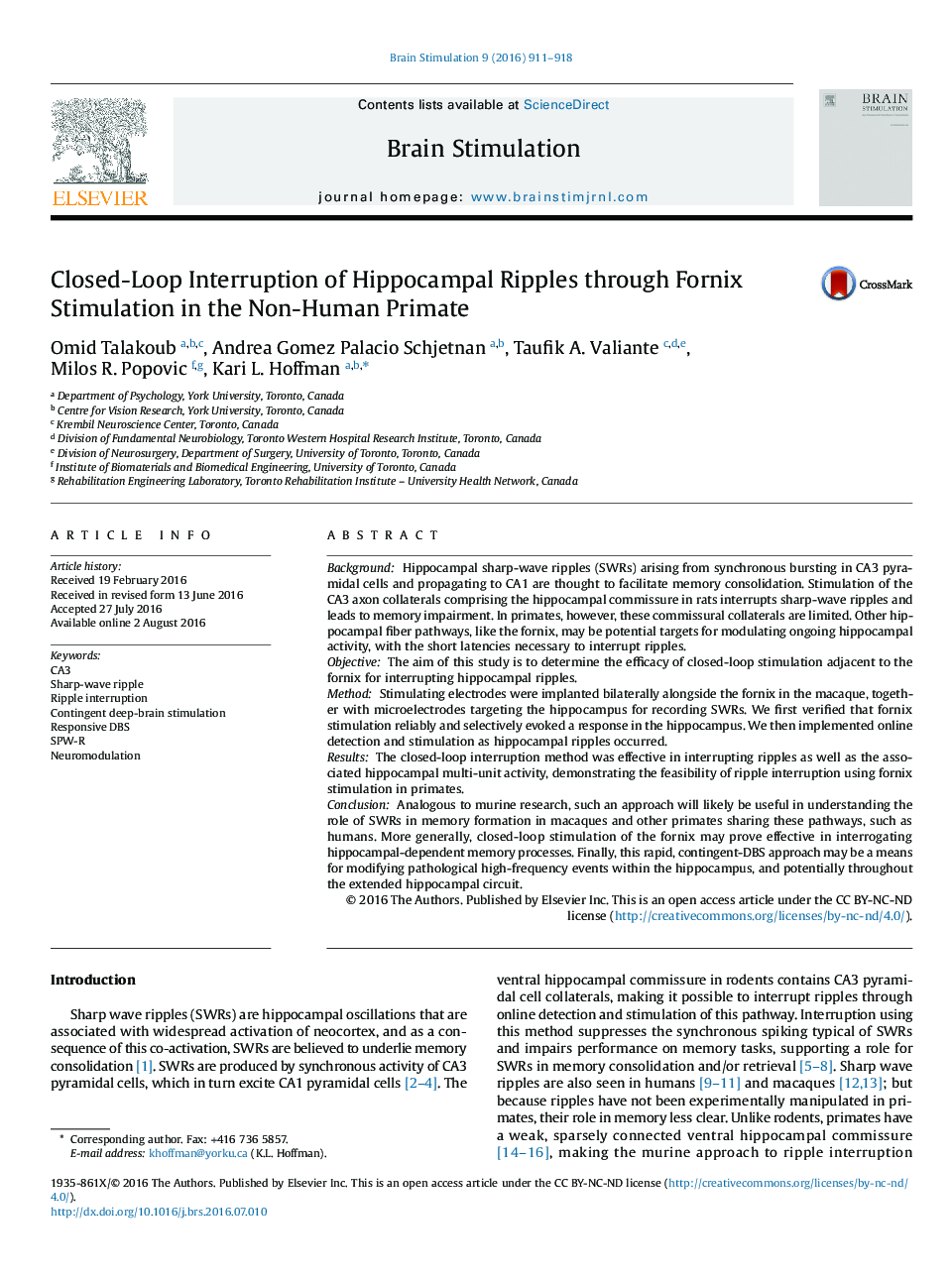| Article ID | Journal | Published Year | Pages | File Type |
|---|---|---|---|---|
| 5626895 | Brain Stimulation | 2016 | 8 Pages |
â¢Stimulation to fornix electrodes can rapidly alter hippocampal activity in the macaque brain.â¢Closed-loop ripple detection leading to fornix stimulation interrupted ongoing ripples.â¢Ripple interruption transiently suppressed multi-unit activity at the hippocampal recording sites.â¢Suppressed multi-unit activity suggests that stimulation could alter local hippocampal computations during ripples, such as cell assembly replay.
BackgroundHippocampal sharp-wave ripples (SWRs) arising from synchronous bursting in CA3 pyramidal cells and propagating to CA1 are thought to facilitate memory consolidation. Stimulation of the CA3 axon collaterals comprising the hippocampal commissure in rats interrupts sharp-wave ripples and leads to memory impairment. In primates, however, these commissural collaterals are limited. Other hippocampal fiber pathways, like the fornix, may be potential targets for modulating ongoing hippocampal activity, with the short latencies necessary to interrupt ripples.ObjectiveThe aim of this study is to determine the efficacy of closed-loop stimulation adjacent to the fornix for interrupting hippocampal ripples.MethodStimulating electrodes were implanted bilaterally alongside the fornix in the macaque, together with microelectrodes targeting the hippocampus for recording SWRs. We first verified that fornix stimulation reliably and selectively evoked a response in the hippocampus. We then implemented online detection and stimulation as hippocampal ripples occurred.ResultsThe closed-loop interruption method was effective in interrupting ripples as well as the associated hippocampal multi-unit activity, demonstrating the feasibility of ripple interruption using fornix stimulation in primates.ConclusionAnalogous to murine research, such an approach will likely be useful in understanding the role of SWRs in memory formation in macaques and other primates sharing these pathways, such as humans. More generally, closed-loop stimulation of the fornix may prove effective in interrogating hippocampal-dependent memory processes. Finally, this rapid, contingent-DBS approach may be a means for modifying pathological high-frequency events within the hippocampus, and potentially throughout the extended hippocampal circuit.
